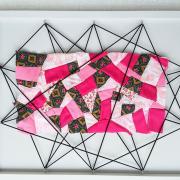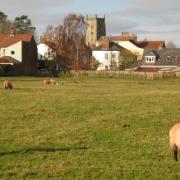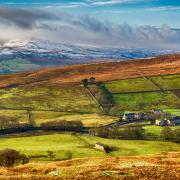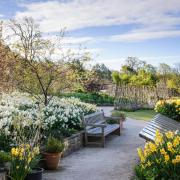A special Leeds library secures its place in the history books

You don’t expect to find one of the most significant libraries in Britain tucked away between a Co-op bank and Paperchase on a busy city centre shopping street bookended by Lush and Starbucks. You could walk past the door of The Leeds Library every day and not notice it. In fact, most people in the city do – marching along Commercial Street on their way to work, to enjoy a spot of retail therapy or to catch up with friends over a quick bite.
It is inconspicuous to the point of invisibility. But, as it celebrates its 250th anniversary, the oldest independent subscription library in the country is starting to raise its profile with a fascinating programme of exhibitions, displays, talks, performances, writing and tours. Opening its collections to members and non-members, it’s hoping that more people will venture through its modest doors to explore its rich treasure trove of literary gems and factual masterpieces.
‘We want to be a valued asset for the people of Leeds, not just a relic of the past but something they use and enjoy,’ said chief executive Carl Hutton. ‘We’re an important part of the city’s history, but we also want to be part of its future too as a key member of its already impressive network of arts spaces. This is a very special venue which we’re more than happy to share.’
Special doesn’t quite cover it. For anyone who’s even vaguely fond of books, it’s magical. Just a few steps up from the bustling city centre shopping street, you find yourself in a wonderland of books, spiral staircases, cosy reading nooks, crannies crammed with fiction and fact, and the unmistakable whiff of curiosity in the air. The people populating the balconies, tables and comfy wingbacks are obviously here on their own individual journeys of discovery; to read, to research, to learn and to explore.

It is, after all, why the library was founded back in 1768, acting, in effect, as the internet of the day, providing information, education and entertainment all in one place (thankfully, without the distraction of Candy Crush and Twitter).
This kind of independent subscription library – created, owned and run by its members – was established in many towns in the late 18th and early 19th centuries, appearing alongside other important privately-funded schemes such as cloth halls and assembly rooms to give middle-class readers the chance to share myriad expensive tomes without having to bankrupt themselves.
Examples still flourish in Belfast, Exeter, Manchester, Penzance, Plymouth and Tavistock, but none is as old as Leeds, whose founder members included theologian, philosopher, scientist, liberal educationalist and all-round Yorkshire hero Joseph Priestley, who was the library’s first secretary.
‘It attracted a broad mix of likeminded people,’ said Carl. ‘There were 500 shares available from when it started until we became a charity in 2008. You had to be invited to join, but people could apply for temporary membership and the wives, children and servants of members could also use the library, so it was never really the sole preserve of 500 people. And it was never a men-only club. It always aimed for inclusivity.’
The collections, which now add up to around 148,000 items, are particularly rich in travel, topography, biography, history and literature. There are long runs of periodicals, popular novels, children’s books and Civil War pamphlets. And it’s not a library preserved in aspic; around 1,500 new books and audio-visual items are added every year, most of which are recommended by the members.
Some areas of acquisition have remained steadfastly popular – foreign travel, history, literature and British topography – while others have waned, notably natural history, science and theology, although all are still represented on the shelves.
Important works of reference, once bought for the collection as a matter of course, were neglected in favour of more popular items in the latter half of the 20th century due to a shortage of funds and changes in taste. More recently, however, the library has been able to invest in landmark works like Victoria County History, Loeb Classical Library, Pevsner Buildings of England and the Oxford Dictionary of National Biography.
More contemporary collections have also been added, including foreign language film and crime fiction, which has grown rapidly into an impressive collection within a collection in the library’s fiction sequence.
‘There are so many distractions today that I think people value a place that is still largely about books, about finding space, finding peace and quiet, and finding a quiet corner where you can explore new worlds and new ideas,’ said Carl. ‘Yes, we are something of a throwback but, frankly, that’s one of our greatest strengths.’
Many subscription libraries fell by the wayside with the introduction of free public libraries and the growth of large commercial circulating libraries, set up by the likes of Boots, Harrods, and WH Smith. One of the main reasons The Leeds Library has survived for 250 years is its canny location in Commercial Street at the heart of the city, which has brought in a steady rental income from the five street front shops the founders purchased as part of their original deal.
It’s not all been plain sailing though. A significant drop in popularity and income in the mid-20th century meant several important books had to be sold to keep the library open. From the 1980s onwards, however, financial stability and renewed interest have allowed the library to invest in more stock, staff and conservation programmes.
Becoming a charity 10 years ago also proved to be something of a turning point, allowing the library to open up its membership (now numbering more than 900) and to programme more public events (most recently appearances by poets Simon Armitage and Tony Harrison and actor Pauline McLynn). The Leeds Library is open to the public every Thursday from 5-7pm and membership is now available for just £132 a year (half price for students), which, when you consider that you can borrow 30 items at a time, seems like very good value indeed.‘We occasionally get people who just turn up because they’re intrigued about what we do,’ said Carl. ‘We don’t turn them away. If they want a quick look round, we let them.’
The library’s ghost – of course it has a ghost – might not be quite happy with this laissez-faire attitude, but it suits the thoroughly modern sensibilities of the friendly, welcoming staff. Just in case you happen to bump into him, you should know that the ghost is the spirit of 19th century librarian Vincent Sternberg. He’s harmless, apparently, but can be quite tetchy about lights being left on and has been known to occasionally ring a gong.
While Mr Sternberg is a ghostly blast from the library’s past, Carl and his team have their eyes firmly set on the future of this stunning, but still largely unknown, cultural asset.‘We don’t want to be a hidden gem or a secret treasure,’ said Carl. ‘We want to play a much more visible role in the community as an active, valued arts space. Our 250th anniversary is massively important to us. We want to celebrate our history while looking to the future. For us, this is just the beginning.’



























